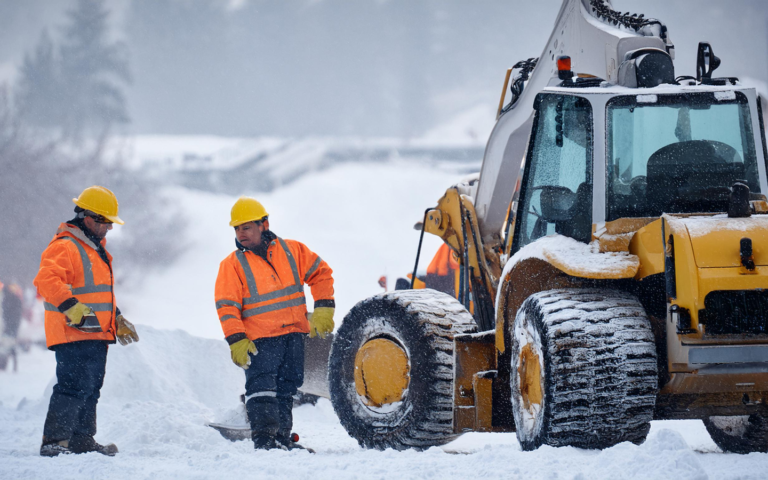
Winter Safety for Outdoor Workers: Essential Insights for Industry Leaders

Winter conditions pose significant risks to outdoor workers, including frostbite, hypothermia, and accidents caused by icy surfaces. These hazards jeopardize worker safety and disrupt operations, leading to costly delays and compliance challenges. Proactive preparation is essential, and industry leaders must adopt comprehensive strategies to protect their teams and ensure business continuity.
At Key Safety LLC, we empower businesses with tailored solutions to navigate winter challenges. This article explores the importance of winter safety across industries, actionable practices to reduce risks, and the critical role of compliance in mitigating hazards.
Why Winter Preparation Matters for Key Industries
Transportation Industry
The transportation sector faces significant challenges during winter, including hazardous road conditions and freezing temperatures. Fleet winterization, driver training, and contingency planning are essential for maintaining operations. Proper measures reduce risks, improve safety, and align with the National Highway Traffic Safety Administration’s winter driving tips (National Highway Traffic Safety Administration, 2022).
Construction Industry
Construction workers are vulnerable to cold stress, frostbite, and slips, especially during outdoor projects. OSHA advises employers to provide personal protective equipment (PPE) such as insulated gloves, boots, and layered clothing, alongside heated shelters and scheduled breaks to reduce exposure (Occupational Safety and Health Administration, 2019).
General Industry
Facilities with outdoor logistics operations face heightened risks of frostbite and hypothermia during winter. Emergency response plans, warm fluids, and regular health monitoring are crucial measures to ensure worker safety (Centers for Disease Control and Prevention, 2020).
Environmental Services Industry
Environmental workers, often operating in remote and exposed conditions, must rely on proper training and emergency preparedness. Access to warming stations and comprehensive cold-weather protocols ensures their safety in extreme conditions (National Weather Service, 2022).
Four Key Safety Areas
Winter safety requires attention to four critical areas: prevention, preparedness, response, and recovery.
- Prevention: Educate employees on cold stress symptoms, provide PPE, and schedule tasks to minimize exposure (Occupational Safety and Health Administration, 2019).
- Preparedness: Implement emergency plans for extreme weather, including provisions for blackouts or stranded workers (Ready.gov, 2023).
- Response: Utilize real-time weather updates and deploy mobile warming stations to reduce risks (National Weather Service, 2022).
- Recovery: Conduct post-storm inspections to identify hazards such as black ice and structural damage (National Weather Service, 2022).
Top Winter Safety Practices
- Equip workers with appropriate, insulated PPE.
- Schedule regular breaks in warm areas.
- Monitor weather conditions for operational adjustments.
- Train workers to identify signs of cold stress and hypothermia.
- Maintain winter-ready tools and vehicles.
- Apply slip-resistant treatments to walkways.
- Hydrate workers with warm, non-alcoholic fluids.
Proactively integrating these practices reduces risks, safeguards workers, and ensures operational continuity during the winter months.
References
Centers for Disease Control and Prevention. (2020). Cold stress. CDC. https://www.cdc.gov/niosh/topics/coldstress/default.html
Ready.gov. (2023). Winter weather. Ready.gov. https://www.ready.gov/winter-weather
National Highway Traffic Safety Administration. (2022). Winter driving tips. NHTSA. https://www.nhtsa.gov/winter-driving-tips
National Institute for Occupational Safety and Health. (2019). Workplace safety and health topics: Cold stress. CDC. https://www.cdc.gov/niosh/topics/coldstress/
National Weather Service. (2022). Winter weather safety and preparedness. NOAA. https://www.weather.gov/safety/winter
Occupational Safety and Health Administration. (2019). Winter weather: Cold stress. OSHA. https://www.osha.gov/winter-weather/cold-stress
National Weather Service. (2022). Winter hazards. NOAA. https://www.weather.gov/safety/winter-hazards

